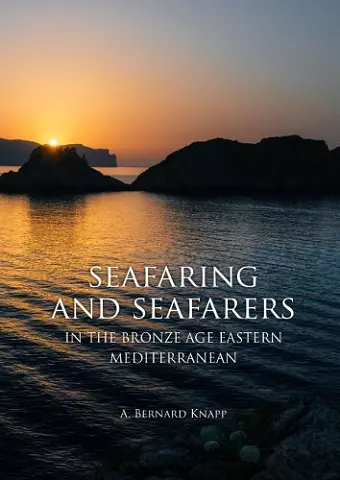Seafaring and Seafarers in the Bronze Age Eastern Mediterranean
Format:Hardback
Publisher:Sidestone Press
Published:20th Sep '18
Currently unavailable, and unfortunately no date known when it will be back

Seafaring is a mode of travel, a way to traverse maritime space that enables not only the transport of goods and materials but also of people and ideas — communicating and sharing knowledge across the sea and between different lands. Seagoing ships under sail were operating between the Levant, Egypt, Cyprus and Anatolia by the mid-third millennium BC and within the Aegean by the end of that millennium. By the Late Bronze Age (after ca. 1700/1600 BC), seaborne trade in the eastern Mediterranean made the region an economic epicentre, one in which there was no place for Aegean, Canaanite or Egyptian trading monopolies, or ‘thalassocracies’. At that time, the world of eastern Mediterranean seafaring and seafarers became much more complex, involving a number of different peoples in multiple networks of economic and social exchange.
This much is known, or in many cases widely presumed. Is it possible to trace the origins and emergence of these early trade networks? Can we discuss at any reasonable level who was involved in these maritime ventures? Who built the early ships in which maritime trade was conducted, and who captained them? Who sailed them? Which ports and harbours were the most propitious for maritime trade? What other evidence exists for seafaring, fishing, the exploitation of marine resources and related maritime matters?
This study seeks to address such questions by examining a wide range of material, documentary and iconographic evidence, and re-examining a multiplicity of varying interpretations on Bronze Age seafaring and seafarers in the eastern Mediterranean, from Anatolia in the north to Egypt in the south and west to Cyprus. The Aegean world operated on the western boundaries of this region, but is referred to more in passing than in engagement. Because the social aspects of seafaring and transport, the relationship different peoples had with the sea, and the whole notion of ‘seascapes’ are seldom discussed in the literature of the eastern Mediterranean Bronze Age, this volume devotes significant attention to such factors, including: mobility, connectivity, the length and purpose as well as the risk of the journey, the knowledge and experience of navigation and travel, ‘working’ the sea, the impact of distance and access to the exotic upon peoples’ identities and ideologies, and much more.
...a summary work of impeccable scholarship, which addresses a highly significant topic, packs a massive volume of detailed information and analysis into a single volume, and makes it readily available at a reasonable price. It provides a sound summary of current knowledgeand understanding, and should form a solid basis for further research. It does much to integrate our understanding of maritime technology, processes, events and developments into the mainstream tradition of prehistoric European research, and must be considered as being of lasting value to any student of Mediterranean antiquity or ancient seafaring. * International Journal of Nautical Archaeology *
ISBN: 9789088905551
Dimensions: unknown
Weight: unknown
285 pages